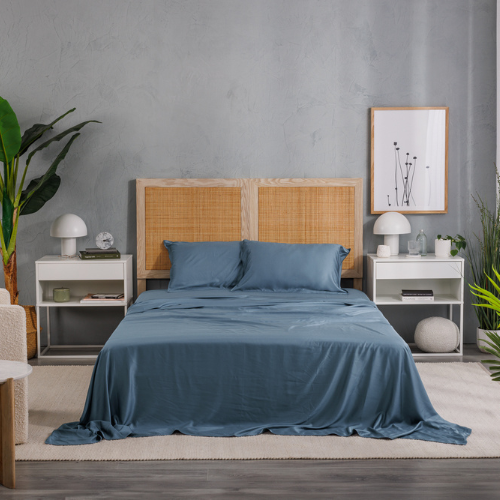We live in a world that rarely slows down. Screens glow late into the night, to-do lists keep us buzzing, and true rest can feel elusive. Yet the secret to better sleep might be closer than you think: a gentle bedtime yoga routine paired with thoughtful yoga room styling ideas that create an atmosphere of calm.
Why Bedtime Yoga is Different Than Daytime Practice
Unlike energizing morning flows, a nighttime yoga routine is designed to downshift the nervous system. Think of it as the body’s way of dimming the lights from within.
Gentle stretches and restorative yoga poses activate the parasympathetic nervous system—slowing your heart rate, easing muscle tension, and preparing you for deep rest.
What makes bedtime yoga unique is its rhythm. It’s less about perfect form and more about surrender.
Holding relaxing yoga poses like legs-up-the-wall or a supported forward fold allows gravity to do the work, helping both body and mind settle into stillness. Over time, this ritual becomes a cue for your body that rest is near.
4 Calming Bedtime Yoga Poses for Better Sleep
If you’ve ever felt intimidated by yoga—or worried you’re “not flexible enough”—this is your reminder that bedtime yoga for sleep isn’t about performance. It’s about comfort, calm, and creating a ritual that supports your sleep quality. You don’t need advanced skills, a full studio, or even much space. Just a quiet corner, a soft surface, and a willingness to slow down.
Here’s a beginner-friendly sequence designed to melt away tension and prepare your body for rest:
1. Child’s Pose
Kneel on your mat (or even on your bed), letting your big toes touch and your knees rest wide. Fold forward, resting your arms ahead of you or gently by your sides. Let your forehead sink into the mat or a pillow.
-
Why it helps: Releases back and shoulder tension that often builds up from sitting or screen time.
-
Beginner tip: If your hips feel tight, place a cushion or folded blanket between your hips and heels for extra support.
-
Sensory cue: Feel the gentle pressure of your forehead against the surface beneath you—this grounding sensation naturally quiets a busy mind.
2. Butterfly Pose
Sit upright and bring the soles of your feet together, letting your knees fall open. Hold your ankles or rest your hands on your shins.
-
Why it helps: Opens the hips, an area where we unconsciously store stress, while also encouraging slower breathing.
-
Beginner tip: If your knees hover uncomfortably, slide cushions or yoga blocks underneath them.
-
Sensory cue: Notice the release in your hips as your chest stays open, making space for deeper, calming breaths.
3. Seated Forward Fold
Extend your legs out in front of you and gently fold forward from the hips. It’s not about touching your toes—let your hands fall where they naturally land.
-
Why it helps: Stretches the spine and hamstrings while promoting introspection and stillness.
-
Beginner tip: Bend your knees slightly if your hamstrings feel tight, or place a cushion under your thighs for comfort.
-
Sensory cue: Allow your head and neck to be heavy, as though each exhale is releasing the day’s weight.
4. Legs-Up-the-Wall Pose
Lie on your back with your legs extended upward against a wall or resting on the edge of your bed. Place your arms at your sides or on your belly.
-
Why it helps: Improves circulation, reduces swelling in tired legs, and sends a powerful signal of relaxation to the nervous system.
-
Beginner tip: If the floor feels too firm, place a folded blanket under your hips for extra comfort.
-
Sensory cue: Imagine tension draining downward with each exhale, leaving your body lighter and calmer.
Bringing It All Together
Move through each posture slowly, holding for 2–5 minutes. There’s no rush—this is your time to soften. Pair your poses with mindful breathing, emphasizing longer exhales than inhales. This activates the body’s “rest and digest” mode, telling your nervous system it’s safe to let go.
If you only have a few minutes, choose one or two poses. Even a short yoga before bed session can make a difference in how quickly you fall asleep and how deeply you rest. With practice, this bedtime yoga routine becomes a familiar signal that guides you into restful slumber.
Extending the Ritual Into Sleep
The benefits of bedtime yoga don’t stop when you roll up the mat. Carrying that sense of calm into your sleep environment makes the practice even more effective. Soft textures, breathable bedding, and a soothing atmosphere can transform your bedroom into a true sanctuary.
You can learn more about how eucalyptus bedding can impact your sleep and why the fabrics you choose at night matter as much as the poses you practice.
Designing Your Yoga Sanctuary
Movement is only half the ritual, your surroundings play just as big a role. A well-designed yoga corner doesn’t need to be grand; it needs to feel personal, calming, and supportive. Here are fresh yoga room ideas to inspire you:
-
Scents for a multi-sensory experience: Add fragrance to your space with incense, a candle, or a sage room spray. Essential oils or a diffuser can also be soothing options.
-
Layered lighting: Use a mix of lamps, fairy lights, or a salt lamp instead of one bright overhead light. The warm glow helps signal your body it’s time to slow down.
-
Natural accents: Go beyond plants—opt for dried floral arrangements, an organic woven rug, or a handcrafted wall hanging to bring warmth and grounding textures indoors.
-
Soundscapes with intention: Try a sound bowl, soft chimes, or a curated playlist to create a calming rhythm and support mindful breathing.
-
Props as décor: Choose yoga mats, cushions, or blocks in natural fabrics and muted colors so they look beautiful when stored in a basket or stacked on a shelf.
-
Meaningful textiles: Incorporate pieces with a story—like a woven throw, cotton tapestry, or handcrafted cushion—to add character and comfort.
-
Transition zones: Create a simple “ritual marker,” like a meditation cushion or bench by the doorway, to help your mind shift from the day into rest.
Even a decluttered corner with soft light and intentional details can feel like a sanctuary.
To carry this sense of calm into your bedroom, explore tips for creating a relaxing and sustainable bedroom space that extend your practice into sleep.
Why This Ritual Matters
A bedtime yoga routine is less about doing something “extra” and more about giving yourself permission to slow down. It’s the quiet pause that helps you leave the day behind. Instead of lying awake with a busy mind, you create space to slip into rest with ease.
The little things such as soft light, calming textures, breathable bedding become part of the ritual that carries you into deeper sleep.
✨ Tonight, try one pose, light one candle, and when you’re ready, explore our collection of eucalyptus bedding to make your evenings even more restful.













